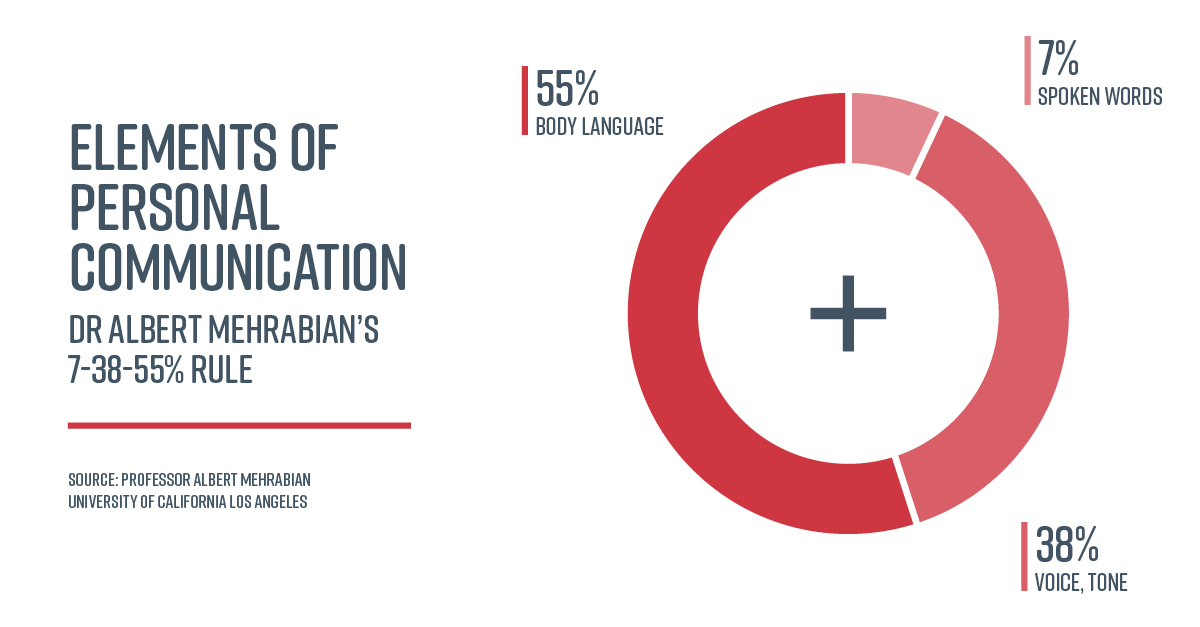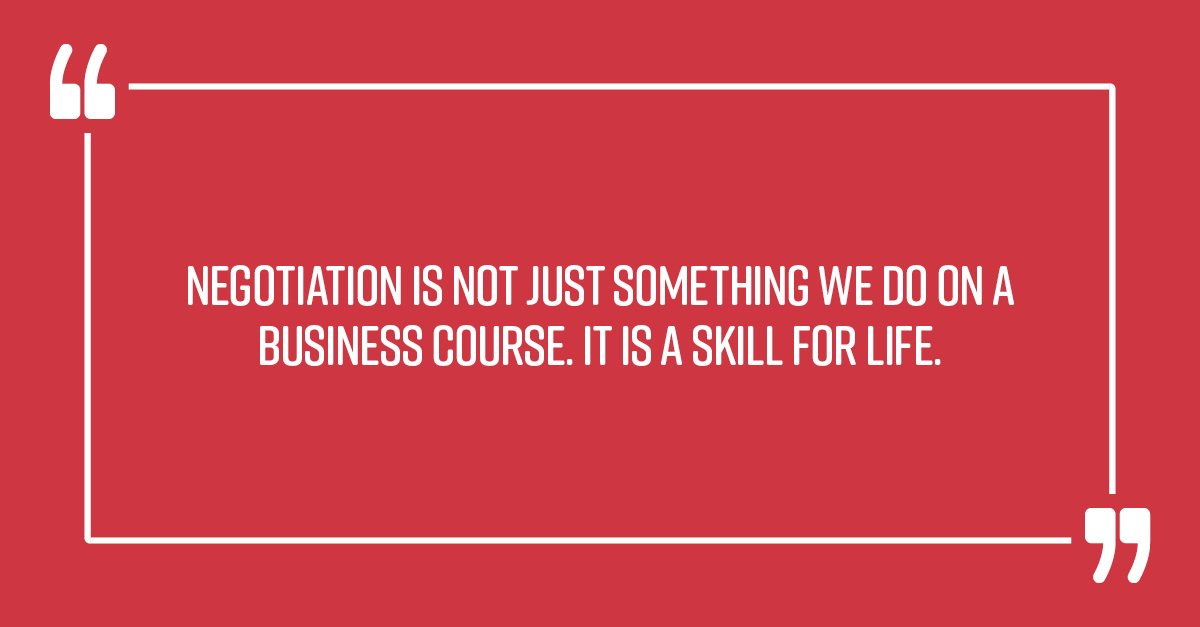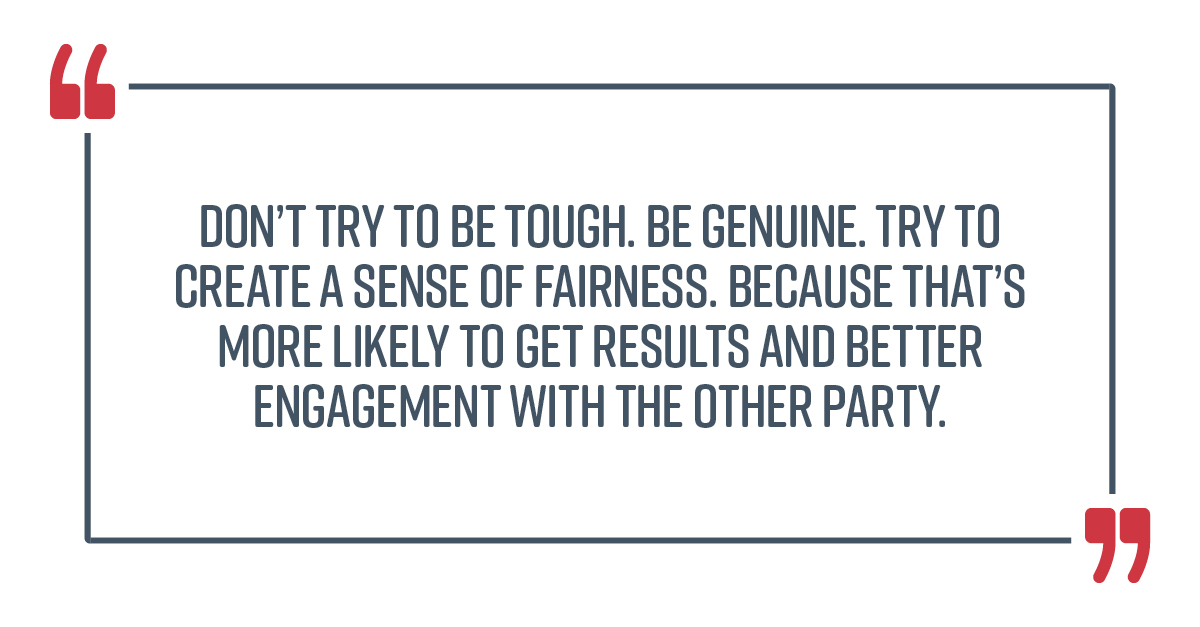Positive CEO Jonathan O’Brien, considers the importance of language during a negotiation, and how tone of voice and phraseology can be used to help drive things in the direction you want. He explores the subtle nuances we use everyday, and considers ways in which we can proactively embrace these to gain competitive advantage.
You might think that negotiation is about understanding our power, doing our homework, using good tactics and managing concessions. And you would be right…it’s all of those things. But there are other crucial components of negotiating well, including body language, what we say and how we say it.
Supplier advantage
Suppliers get a great deal of training in neuro-linguistic programming (NLP), body language and the use of language. Procurement people need to have that same advantage. Of course, we know that the other side will scrutinize our words but they will also weigh up how we communicate. Research by Albert Mehrabian in the seventies found that only 7% is the words, about 38% comes from how we say it and 55% is body language. Many people have no idea that they’re giving away a position just by what they say and how they say it. Or, that they’re missing an opportunity to pick up on what the other party might be saying.

Communication techniques
Techniques we should consider when negotiating include tone of voice, speed of delivery and the inflections. We call this paralanguage.
In his book, ‘Reflections on language’, American linguist Noam Chomsky suggests that there is hidden meaning behind what we say. We just have to tune into it.
Mirroring is where we match our pace of delivery and tonal qualities to our opponent. This creates a subconscious connection that says, ‘We’re together on this.’ It builds trust and makes you like the other person. Salespeople are taught to do this and we need to do it back to build rapport. So, mirror the way that the other party is using language. Don’t overstate it or make it too obvious, but mirror what they’re doing to connect.
When you are listening to the other side, tune into their inflections and how they’re saying things, because often people will do that without realising it. In a negotiation there could be vital clues.
Negotiation is not just something we do on a business course. It is a skill for life.

Metalanguage
What about the dialogue? The words we actually use. Of course, these are really important. This is what we call metalanguage and includes how we embellish and emphasize words. It’s where there are deeper or hidden meanings. This is where our subconscious, without conscious thought, adds words into sentences, to try and de-emphasize the thing it doesn’t want other people to know.
The second thing to think about here is how we stress words and how things are actually said.
When you’re negotiating in your head, it’s really clear. You’ll see it based on how you see the world. And when you’re communicating with somebody they will relate it to depending on how they see the world. We delete, distort and make generalizations.
In negotiation, when a supplier is laying out their position, we need to use clarifying questions to get behind what they’re saying and understand the hidden meaning. Never take things at face value. Always challenge, even if it makes them feel uncomfortable.
Demeanor
There is a tendency to try and be the big negotiator. Actually, one of the most powerful skills is not to be the tough negotiator, but to have a genuine quality that builds on who you are. That’s more powerful. You can still be firm and tough, but you create a sense of fairness and an illusion – it may even be genuine – that you want a win-win, and you care about the other’s outcome.
Don’t try to be tough. Be genuine. Try to create a sense of fairness. Because that’s more likely to get results and better engagement with the other party.

Saying ‘no’
Occasionally, you might want to use the word, ‘no’. Use ‘no’ sparingly. No means no. It’s like closing a door. Rather than saying, ‘No, I can’t do that,’ it’s better to leave the door open. Say something like, ‘That’s not a place we can go to.’ Or create some doubt, ‘I don’t think that’s a place we can go to.’ ‘No’ is very difficult to come back from. It does have its place when you want to give a very strong message but you have to be careful.
Open and closed questions
Open and closed questions are where there’s a yes or no answer. Be careful of these. If you are asked, ‘Is that your final offer?’, what would you say? You’re not going to say, ‘No.’ So, don’t ask that question. But you can use a closed question in a slightly different way that gives an ultimatum, ‘If I give you an additional 10%, will you agree today?’
Open questions are very good in negotiation. ‘How can you improve your offer? Tell me what’s stopping you being able to do this deal? Talk to me about the things that are causing you to hold back.’ Open questions get them talking. If they’re talking, you’re listening, buying time to think and forming your position.
Leading questions
What about leading questions? If I say, ‘Surely you’d like to meet me in the middle with this?’, that’s a leading question and great to use where you’re trying to lead them to a particular course of action. Be careful when people do that to you because suppliers use such questions to help get them to where they want to be.
What about, ‘Is there any room for improvement here?’ That’s a classic negotiation question. If you’re forced to answer that question, you’re stuck in a cul-de-sac. You either say no and risk losing the deal, or yes, and reveal that there was room for improvement all along.
It’s designed as a closed question to force you to jump one way or the other. You could answer the question with a question. You could say something like, ‘Do you really think there could be room for improvement? We’ve just spent an hour talking this through and I’ve been really clear about our position.’
That makes them look as if they’re upsetting you along the way. Or, duck the question and say, ‘Look, I’m not going to get into that sort of street trader exchange with you.’ Avoid answering it. Or, question the question. ‘Why are you asking that? Why would you even ask that?’ Call it out as if they’re somehow being outrageous. Make them feel as though you’ve been inconvenienced.
You could even defer the question and say, ‘Let’s come back to that once we’ve discussed everything else.’ Put it to one side.
So, when somebody asks a closed question in a negotiation, you don’t have to say yes or no. There are other things you can do to kind of deflect it, duck it or question it that get you out of that situation.
Language to avoid
We need to avoid lots of things in terms of how we use language. Don’t threaten or use personal insults. Threatening people means you are feeling anxious. People make threats when they’re afraid and, if you’re afraid, then you’re not in control and you’re giving the other side an advantage.
Listen. If you interrupt, you’re not listening. Avoid sarcasm. It’s a sign you are lacking confidence. Never swear because people who are confident and in control never need to swear. Don’t react to provocation or blame the other party.
Three take-away techniques
First, listen intently. Listen to what they’re saying and tune into the hidden meaning by the way they’re saying it and their choice of words. We’re all experts in this. We do it but we probably don’t pick up on it. Tune in and listen.
Secondly, think carefully about your own use of language. It is great to record a negotiation and see and hear yourself in action. There are probably a whole bunch of things you don’t realize you’re saying.
And finally, when we’re negotiating and in life, use the other party’s name because addressing them personally connects to them. It makes them feel just a little bit loved and we all like to be loved. When people use their names, it actually creates a connection and makes it personal. If you think people aren’t quite with you, the moment you say their name, they’re right back there again. It creates rapport and, as such, is a really good technique.
Written by negotiation expert, award-winning author of a series of acclaimed procurement and negotiation books and CEO of Positive, Jonathan O’Brien. Jonathan is a leading expert on negotiation and works with global blue-chip organizations to help transform their negotiation and procurement capability. He also helped pioneer the Red Sheet® negotiation methodology.

